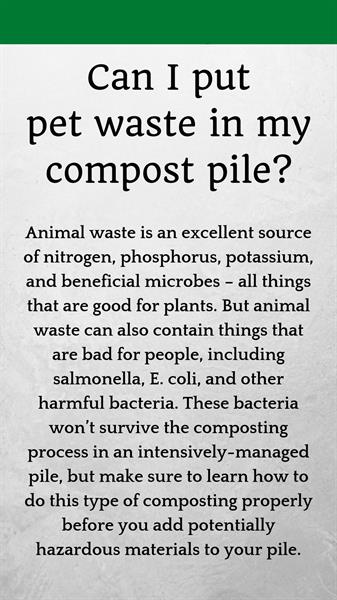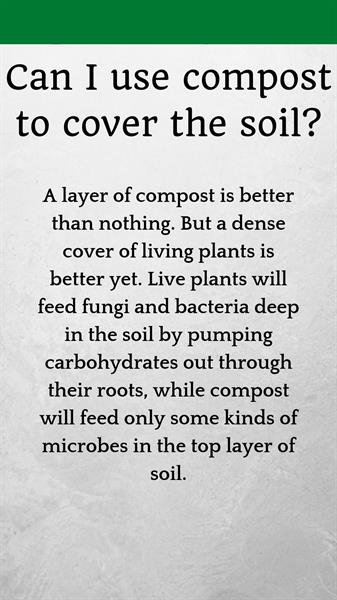Duane Hovorka, Agriculture Program Director
Beneficial bacteria, fungi, worms, and other critters put life in our soil. To keep those critters around, we need to feed them. Using a diverse mix of plants and keeping the soil covered should provide most of what the critters in the soil need, but compost can add nutrients and boost the level of organic matter, creating even better conditions for these friendly microbes.
The word “compost” comes from the old French term composte, meaning “putting things together”, and farmers and gardeners have been making compost for thousands of years. Ancient Greeks, Romans, Chinese, and Native Americans all made and used compost.

The key to high-quality compost is putting the right combination of things together. Carbon-rich plant materials like hay, straw, leaves, paper, sawdust, and wood chips – think brown – should make up the bulk of a compost pile. Nitrogen-rich materials like grass clippings, coffee grounds, and kitchen scraps – think green – add moisture and nutrients. Avoid using grass clippings and other yard waste that has been exposed to herbicides, since these chemicals can persist in the pile and harm your garden plants when you spread the finished compost around them.
Adding microbes to the pile by tossing in the occasional handful of soil will speed along the composting process. Water and air help keep the microbes healthy while they do their work of breaking down rough plant materials into nutrient-dense compost.
In your compost bin or pile, alternate layers of brown materials and green materials. Think of it like making lasagna! The brown layers should be two or three times as thick as the green layers. To reduce odors and to deter flies and other pests, keep the green materials on the inside of the pile, with an outer shell of brown materials. Keep oxygen in the pile by stirring or turning it regularly. Water the pile when needed, just enough so that a handful of material feels like a damp sponge. If the pile looks too wet, mix in more dry brown materials.
When the processes inside the compost pile are working well, the microbes will generate heat. Steam rising off a compost pile is a great sign! When the microbes are working that hard, though, they’ll use more oxygen, so be sure to stir or turn the pile more often to introduce more air.

Compost is ready to use when it has cooled down and the materials look like a crumbly brown mixture. That can take several months with a very active pile, or more than a year depending on the materials and management.
Now it’s time to use all that nutrient-rich compost! Distribute the compost around growing plants, or put a thick layer on a new garden bed. Compost works as well on lawns as it does in gardens: apply a thin layer to avoid smothering the grass, and repeat regularly to build a healthier lawn.
A technique called “sheet composting” can also be great for your garden. In this method, you can skip the pile and layer brown and green plant materials directly on a garden bed, between growing plants, to let the materials compost in place. The layers of organic material will serve as a mulch to smother weeds and protect soil from the hot sun and drenching rains. And as the materials decompose, they will provide carbon and nutrients to your plants.
The Rodale Institute has more information on compost systems and compost bins suitable for backyard gardeners.